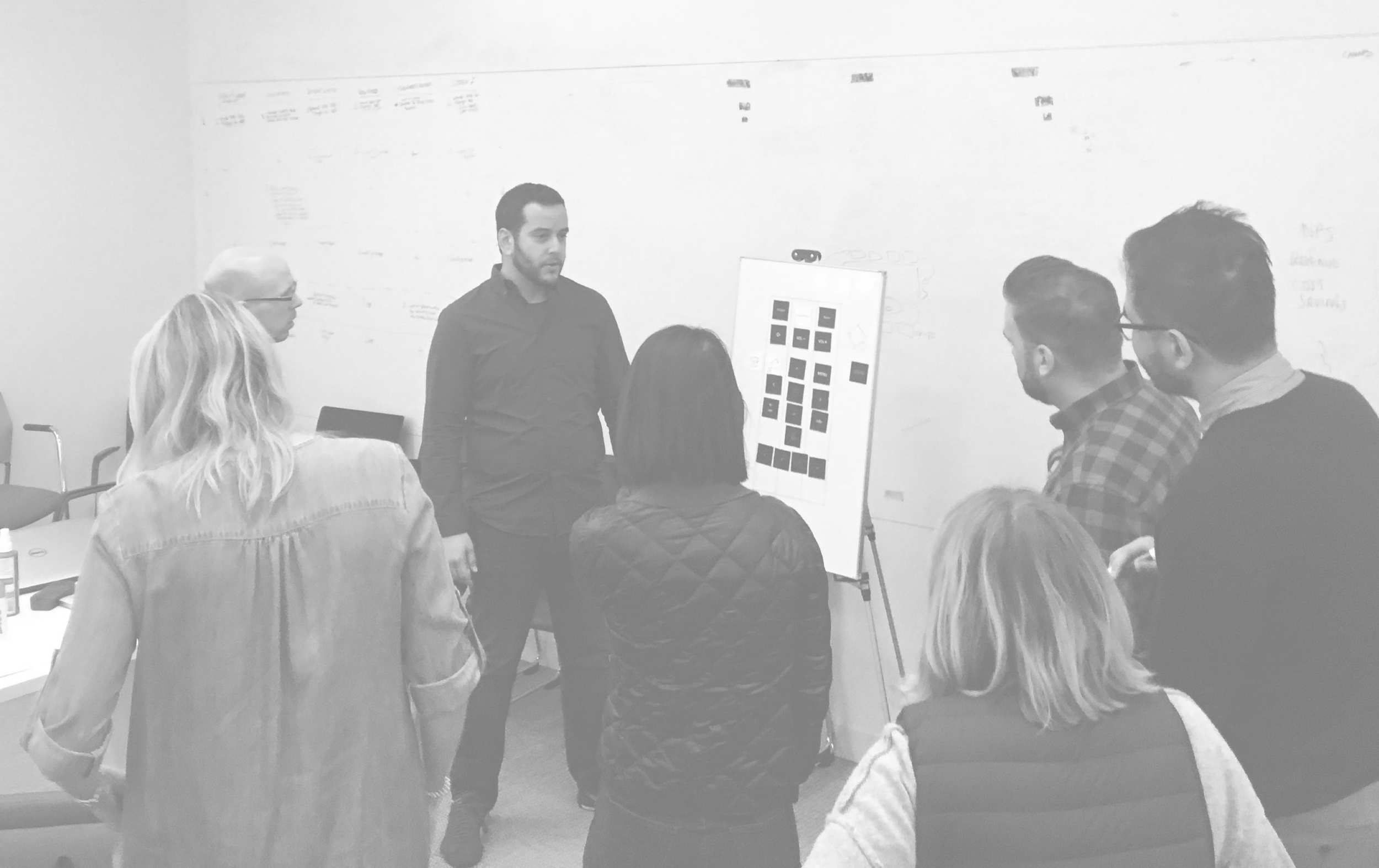
Leadership
Here I am speaking on voice strategy and experiences at the VOICE conference in 2019
As a leader, I expect myself to be adaptable, well-informed, and ready to act. I make connections to ensure design is included at the right moments. I act as a strategic partner, clearing pathways for my teams while maintaining a supportive environment where they can do the best work of their careers.
There is a clear difference between leadership and management, and I pride myself on being a leader - whether the team working on the project is a group of 30 or 1.
Whether it's through active coaching, mentorship, or getting hands-on in facilitation, presentation, or design creation - I'm not hesitant to do what needs to be done to be adaptable to ensure the team's success.
Bringing people together
My team in 2019 (with some missing) at the Universal Sphere in Philadelphia
I've make sure that there is diversity of thought in the room when my teams are designing.
Building on a research-based foundation, pulling in other design teams to ensure the journey is wholistic, partnering with our product and engineering teams early and often to make sure their needs/possibilities are aligned - I’m a connector.
Together, with business partners, I work to create products that scale no matter your entitlements or your abilities.
The experiences that we create, reflect the team that created them. If it's a team on an island, there is a huge risk of it being siloed, not meeting everyone's needs, or creating something that isn't possible.
From my days working at agencies, or internally in corporations, I've seen firsthand where solutions designed fail to deliver due to being short-sighted or impossible to deliver. I bring these learnings with me, as a leader, every day.
Principles
There isn’t a singular way to design. The methodologies and exercises may shift as the needs change, partners change, or new techniques arise. But on a broad level, as a leader, I adhere to these:
People bring the best of themselves when they have trust
More so than ever, it’s critical for teammates to have a shared respect for each other. Designers that feel that they have psychological safety are able to bring the best of themselves, and willing to take risks and try something new. As a leader, I support my team as much in failure as I do in success, viewing mistakes as opportunities for growth and learning.Work across teams / disciplines
The users of your experience represent a diverse group, it’s critical for the team working on it to reflect that, ensuring that there is breadth of thought enriching the experience.Design for everyone & all their unique abilities
Inclusivity benefits everyone. Accessibility needs to be available from the start. Many ideas built for those with unique needs, benefit us all; think closed captions, curb cuts on the sidewalk, and more.Envision the future, build & learn for today
It’s important to project what the future may hold, and how your business is uniquely positioned for it. However, there is no “march to utopia”. Keep the future as a beacon, something that we can aspire towards, but don’t be blind to the value in the near-term solutions that build that path.Progress & Perfection
At times, the need for everything to be perfect can weigh down a team and their ability to impact their customers. It’s then critically important to find a way to deliver progressively, while still working on that final perfection. Sometimes an output can be critically more important than achieving the final outcome.
TESTIMONIALS
“During our years working closely together, Neil consistently demonstrated an exceptional ability to turn complex user challenges into exquisite experiences. His collaborative spirit and ability to build meaningful relationships across all organizational levels are unparalleled. ”
“Neil combines a clear strategic vision with hands-on expertise in UX design. Neil isn’t just a talented designer; he’s also an outstanding team leader. He fosters a collaborative and creative work environment that empowers his team to innovate and achieve outstanding results. ”
“I was continuously impressed with his people-leading skills, and ability to herd large cross-functional teams to successful product designs and launches. He has deep expertise in UX, design ops, and innovation. He prioritized inclusivity and discussion, always pushing for compromise and for the best interests of his staff.”

